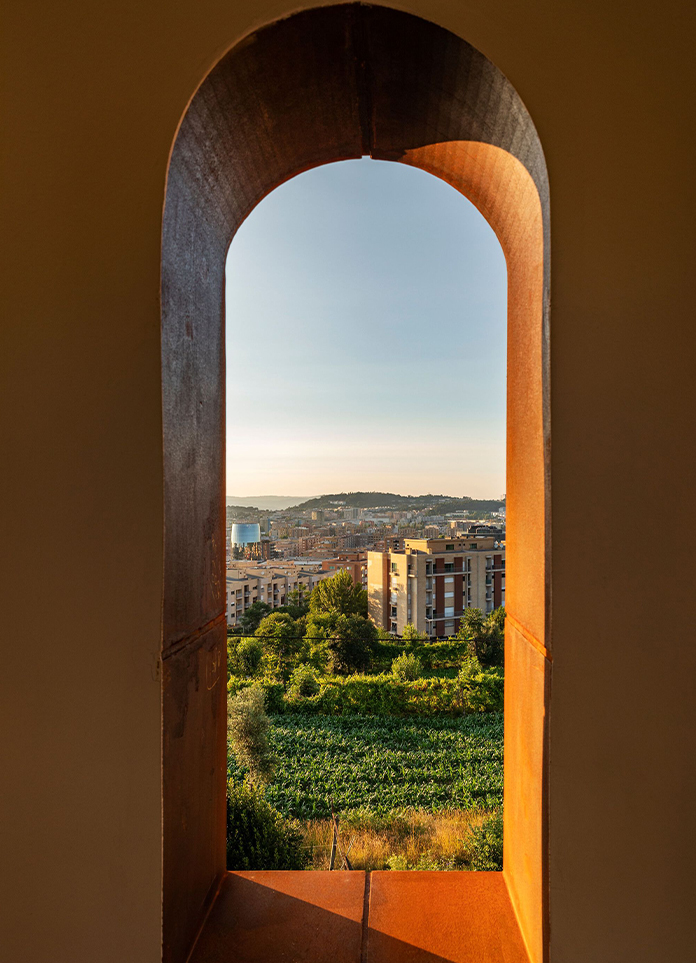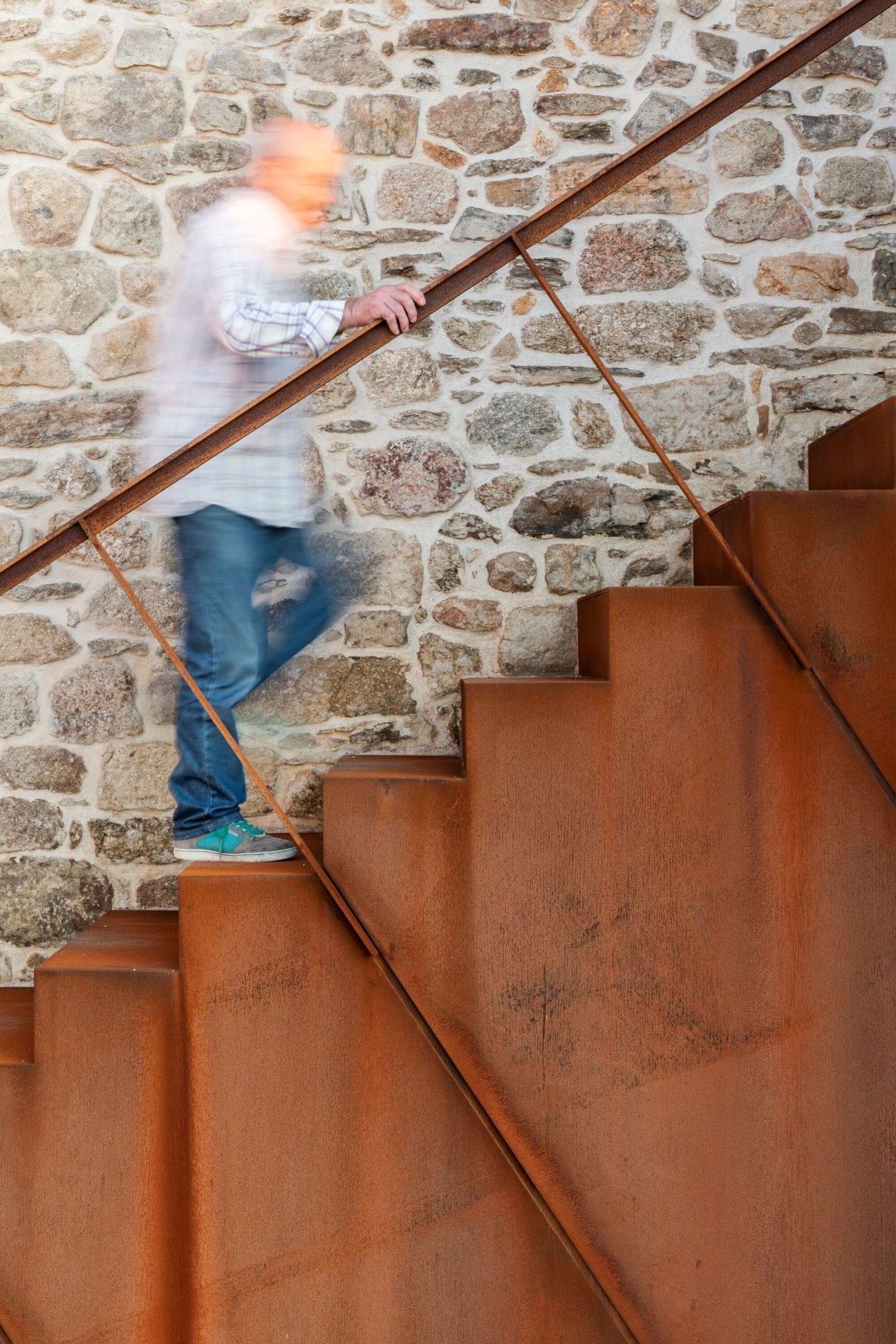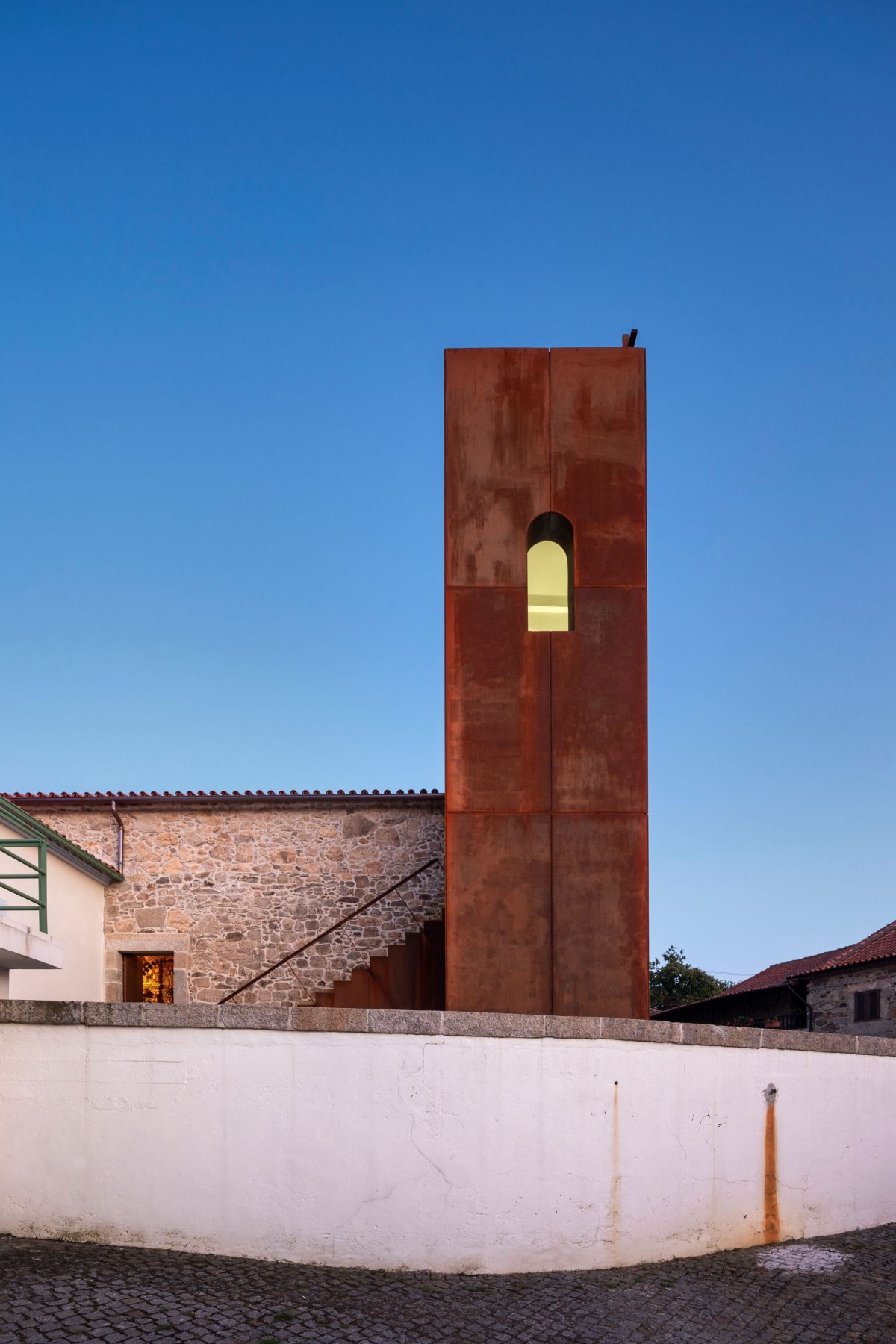
The architectural intervention in the Ancestral Church of Fraião, in Braga, Portugal, is an intervention of analysis and decision. An analysis of the degradation state of the latest interventions carried out at the beginning of the 20th century. The coatings and extensions made with painted cement mortars, both inside and outside the main church, reinforced the decision to uncover its original characteristics by removing the degraded coatings.
The scarce information about the former construction further drives the commitment to unveil its essence and the interventions previously carried out. The design plan presents a simple spatial organization, composed of two rectangles of slightly different dimensions – nave and main church - with an archway passage, this one revealed with the removal of mortar layers.
This single organization also reveals itself in its volumetry where the nave overlays on the main church, although disclosing a slight increase in brickwork. The bell tower, on the left side of the axial entrance of the nave, is a construction of cement-based structure and cladding from the beginning of the 20th century, where no pre-existence sign of the building has been revealed.
Therefore, the intervention proposed would have to follow a principle of contemporary intervention, setting out its time dimension and which not only accommodate the new exterior thermal and accessibility requirements, the interior acoustics and lighting needs, but also the restoration of the choir and the altarpieces of the main and side chapels along with the installation of new ceramic panels and stained glass windows.
The layers of plaster and cement of the façade accumulated throughout the years were subtracted, bringing the stone back to the surface as a solemn act of the "beginning" of the works. At the same time, this return to the basis, which restored the original expression, led to a more contemporary intervention on those elements that could not be changed, as is the case of the bell tower.
- Architect: Nuno Ferreira Capa
- Photos: Attilio Fiumarella
- Words: Anabela Rodrigues

















